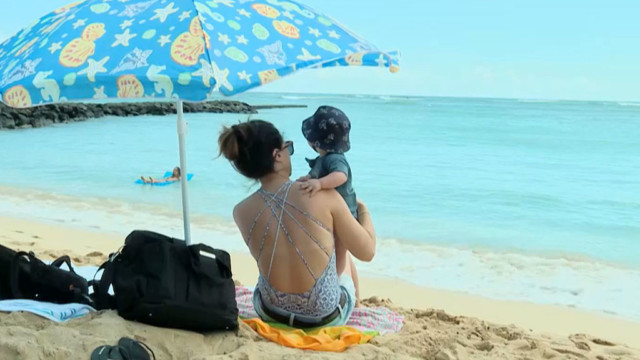Hawaii plans on educating locals on the ‘unlikely’ event of a missile strike from the Democratic People’s Republic of Korea. The tourism industry fears this will mean fewer visitors to the Aloha State. But Hawaiian businesses tell a different story, with tourists still flocking to the islands.
CGTN’s Patrice Howard reports from Waikiki.
Follow Patrice Howard on Twitter @PatriceReports
Despite missile threats from the DPRK, Hawaii’s Waikiki Beach is swarming with tourists.
The Hawaii Tourism Authority reports the number of visitors traveling to Hawaii in July increased 6.8 percent compared to the previous year.
Clarence Booth, is the owner of Waikiki Shore Beach Service, one of the busiest surf shops on Waikiki shore. Booth said his shop relies on tourists “ninety-nine percent.” But the DPRK’s latest threats of a ‘merciless’ strike on the U.S. haven’t kept them away.
“I think the crazier the world gets, I hate to say it like this, but the better it gets for Hawaii because this is considered the safest tourist destination in the world,” Booth explained. “It’s very isolated, under U.S. government protection, and the people here are just so nice, so Aloha.”
Hawaii is among the closest U.S. states to Pyongyang, and the islands will soon begin tests of an “attack-warning” siren, much like the one that rang out in Japan this week when one of Kim Jung Un’s missiles flew over the country.
The Hawaii Tourism Authority supports preparedness efforts, but released a statement expressing concern that if messages are misinterpreted about the state’s need to prepare for an attack, it could scare travelers away.
“Even though there is a threat, and it’s been ongoing for a few months now, we haven’t seen any drop off in numbers,” Mufi Hannemann, President & CEO of the Hawaii Lodging and Tourism Association said.
Hawaii is constantly updating emergency plans to address natural disasters, like hurricanes or tsunami’s. Tourism experts have said a man-made threat is no different.
“Every hotel has a plan, every lodging accommodation is aware of what we need to do,” Hannemann said.
The economy of the Hawaiian islands relies on the 9 million visitors who come every year. Tourism is the biggest industry for the state, bringing in $13 billion a year.
Threats of a strike may hang in the air, but Hawaii’s tourists appear to be breathing easy.
 CGTN America
CGTN America
